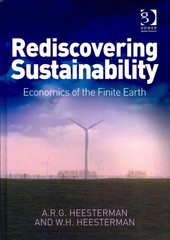Question 5 [3} marks in total] Consider a onep eriod investment problem: the investor purchases securities on Date 11} and receives payouts on Date 1. There are n seculities in the market and 711. states on Date 1. The payout of one unit of Security 3' in State 1' is o,_,-, which is the [i,j]l entry ofthe m K 11 matrix A, for i = l,...,m. andj=1,...,n. Let p be the 1 X n matIiir. whose {1, 3') entry, 3:1, is the unit price of Security 3' on Date .The probability of State i is in. As standard, 17,- :5- U for every 1' and 2:, it,- = 1. The investors position at the end of Date [l is represented by a vector at E R\2. [5 marks] (Straight forward) For the rest of the question, assume that the Law of One Price holds and the market is complete. As shown in Tutorial 3, there exists a unique state price vector q e R" such that p = q' A. Consider a different optimization problem. MAXCER,beRm Vo(c) + ) mu,(b;) (4) 1=1 s.t. ctq'bw. (5) Show that for every (c, b) satisfying Eq. (5), there exists an r E R" such that (c, r, b) satisfies Eqs. (2) and (3). Explain the role of market completeness in your proof. 3. [3 marks] (Medium) Next, we show that if (c*, b*) is a solution to the second program Eqs. (4)-(5), then there exists an * ( R" such that (c*, r*, b*) ( R" is a solution to the first program Eqs. (1)-(3). Notice that the clause of "if" does not assert that the second program actually has a solution. Here is a proof suggested by Daniel. Proof. Since the market is complete, the linear system Ar = b* with unknown x has a unique solution *. Since pr* = (qA)x* = q' (Ax*) = qib*, Eq. (3) is satisfied by (c*, a*, b*). Moreover, Eq. (2) is satisfied by (c*, x*, b*) by construction. Suppose that (c*, x*, b*) is not optimal. Then there exists (c, x, b) # (c*, r*, b*) that satisfies Eqs. (2) and (3) and delivers a higher value of the object tive function in Eq. (1). Notice that the objective functions in the two program are identical. Therefore, that (c, r, b) beats (c*, a*, b*) in the first program implies that (c, b) also beats (c*, b*) in the second program Eqs. (4)-(5), contradicting the optimality of (c*, b*). 0 Evaluate this proof. If you think the proof is correct, explain why it is safe to ignore the potential difference between r* and r in the last sentence of the proof. If you do no think the proof is correct, point out all the mistakes and write down a complete correct proof yourself. 4. [5 marks] (Challenging) Show that if (c*, I*, b*) is a solution to the first program Eqs. (1)-(3), then (c*, b*) is a solution to the second program Eqs. (4)-(5). Again the clause of "if" does not assert that the first program actually has a solution. 5. [4 marks] (Medium) The previous two parts show that under the Law of One Price and market completeness, the two programs are equivalent in the following sense: (i) one has a solution if and only if the other one has a solution; (ii) it is easy to convert a solution of one program to the solution of the other. Now show that the second program has no solution if q;








